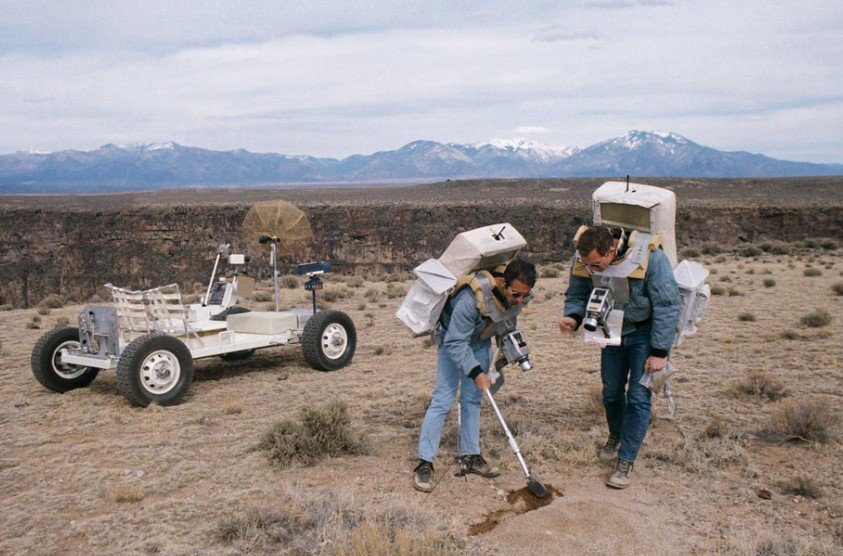A stash of forgotten snapshots from humanity’s giant leap into space is now on display in Georgia—and they’re the real deal, straight from the lens of an Apollo astronaut.
It’s not every day that you see original photos taken during spacewalks and moonwalks—let alone in a small Southern city like Columbus. But that’s exactly what’s on offer at a new exhibition hosted by Columbus State University’s Bo Bartlett Center and the Coca-Cola Space Science Center, running through August 2. And yes, the man behind the camera once drove a rover across the moon.
A Moonwalker’s Legacy Finds a Home in Georgia
There’s a certain reverence in how Shawn Cruzen talks about David Scott, the astronaut who gifted the exhibit its centerpiece. Scott—commander of Apollo 15 and the seventh man to walk on the moon—didn’t just visit space; he brought pieces of it back, in image and object form.
Cruzen, the executive director of the Coca-Cola Space Science Center, stumbled upon this opportunity thanks to an unlikely local connection: the astronaut’s brother, Tom Scott, who once worked for the Columbus Chamber of Commerce.
“Tom just walked in one day and asked if we wanted to show a few mementos,” Cruzen recalled. “What he meant by mementos were lunar mission artifacts—stuff that had literally been to the moon and back.”
That “few weeks” display turned into a permanent home for some of the most personal relics of the Space Age.

Ghostly Moonscapes, Lone Capsules, and A History Etched in Light
Visitors to the exhibit will find it hard not to be awestruck. Among the items: four haunting frames of Gemini 8’s spacecraft docking from 1966. They float in silence—no engine hum, no chatter. Just man, machine, and the stark silence of orbit.
Then there’s the lunar surface itself—grainy, sun-bleached, strangely serene. One image shows Scott standing by the lunar module with the iconic rover beside him, snapped during Apollo 15’s mission in 1971. It feels intimate and monumental all at once.
Some of the photographs feel more like family photos from another planet. Dust kicked up by boots. A helmet catching Earth’s glint. Shadows stretching across rock that hasn’t moved in millennia.
And then the sepia-toned ones—those look like something found in an attic box, except they’re documenting humanity’s first fumbling steps beyond Earth.
From Personal Gesture to Public Treasure
The story behind how these rare images made their way to Columbus might be even better than the photos themselves. The original pieces came in quietly—no press release, no major fanfare.
“I talked to my brother,” he told Cruzen after the first loan. “We’ve decided we want the Center to keep the items permanently. And we’ve got more for you too.”
Over the years, the Scott brothers kept adding to the Center’s archives. Some items are personal—signed mission patches, notes, memorabilia. Others are once-classified photographs, now carefully mounted for public viewing.
Here’s what visitors can expect to see at the exhibit:
-
Lunar rover photos from Apollo 15
-
Gemini 8 spacecraft docking images from 1966
-
Rare photo slides taken from inside the capsule
-
Personal effects and mission gear from David Scott’s career
-
Documentary video loops playing behind-the-scenes footage
A City That’s Quietly Becoming a Space Archive
Columbus may not have a NASA badge on its city sign, but it’s carving out a name in space history just the same. The Coca-Cola Space Science Center already draws in families, students, and science buffs. But this exhibit adds weight to the Center’s mission.
It’s not just a science center anymore—it’s a vault for actual space history.
Cruzen puts it best: “There’s nowhere else in Georgia where you can stand in front of something that went to the moon and back, and see the photos the astronauts took while they were there.”
Here’s a small peek at some of the pieces:
| Artifact/Photo | Mission | Year | Description |
|---|---|---|---|
| Lunar Rover and Lander | Apollo 15 | 1971 | David Scott standing beside the lunar module |
| Gemini 8 Docking Sequence | Gemini 8 | 1966 | Four-photo sequence of space capsule docking |
| Signed NASA flight plan | Apollo 9 | 1969 | Annotated copy used in training by Scott |
| Helmet visor reflections | Apollo 15 | 1971 | Selfie-style image showing Earth in the visor reflection |
More Than Nostalgia—It’s a Time Capsule That Still Speaks
What makes this exhibit hit different isn’t just that it’s rare. It’s that it’s real.
In a time when space travel is filtered through flashy billionaire ventures and cinematic space dramas, these photos are refreshingly simple. No filters. No CGI. Just astronauts doing their job—and making history while at it.
They’re reminders of a time when the unimaginable was made possible with chalkboards, courage, and sheer willpower. And now, they’re sitting quietly in a Georgia gallery, waiting for new eyes to rediscover them.
One visitor was overheard saying, “I’ve seen the moon a thousand times on TV. But this—this makes it feel like I’m standing on it.”
